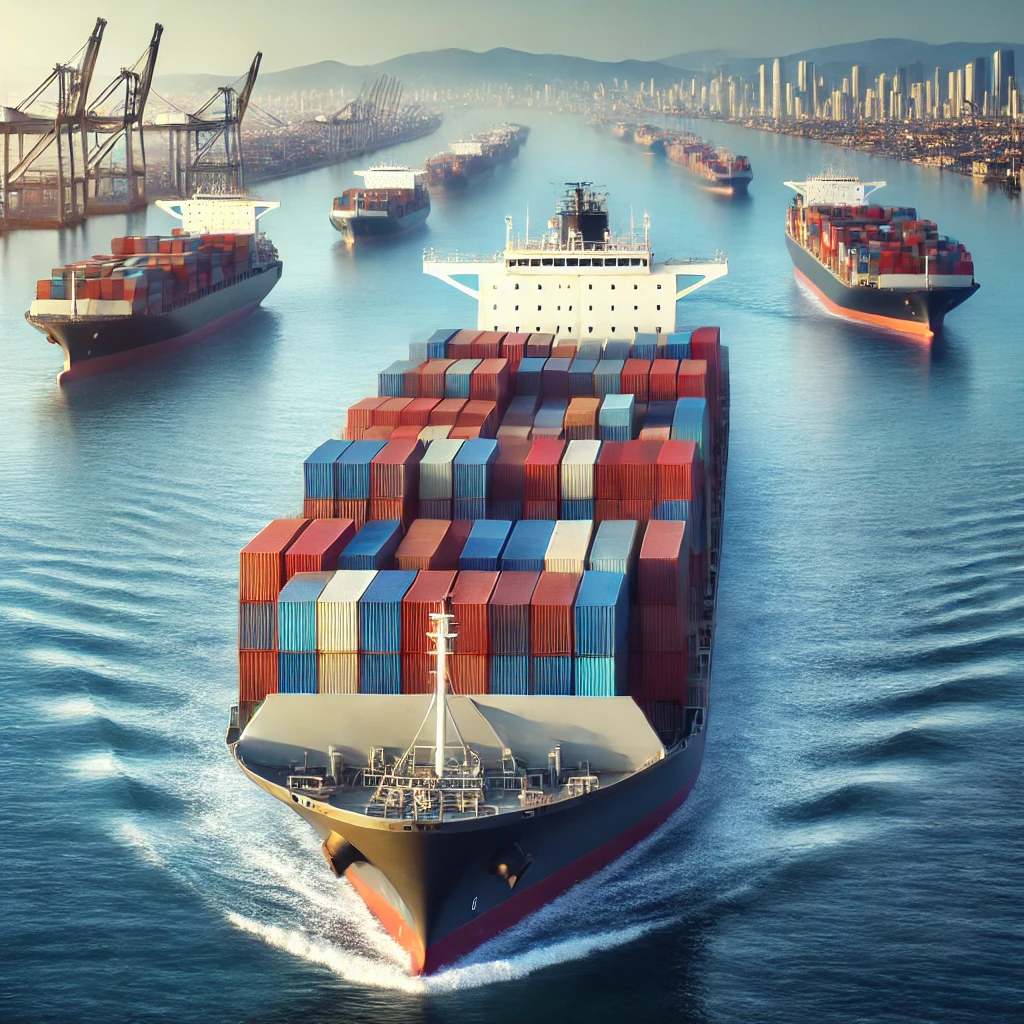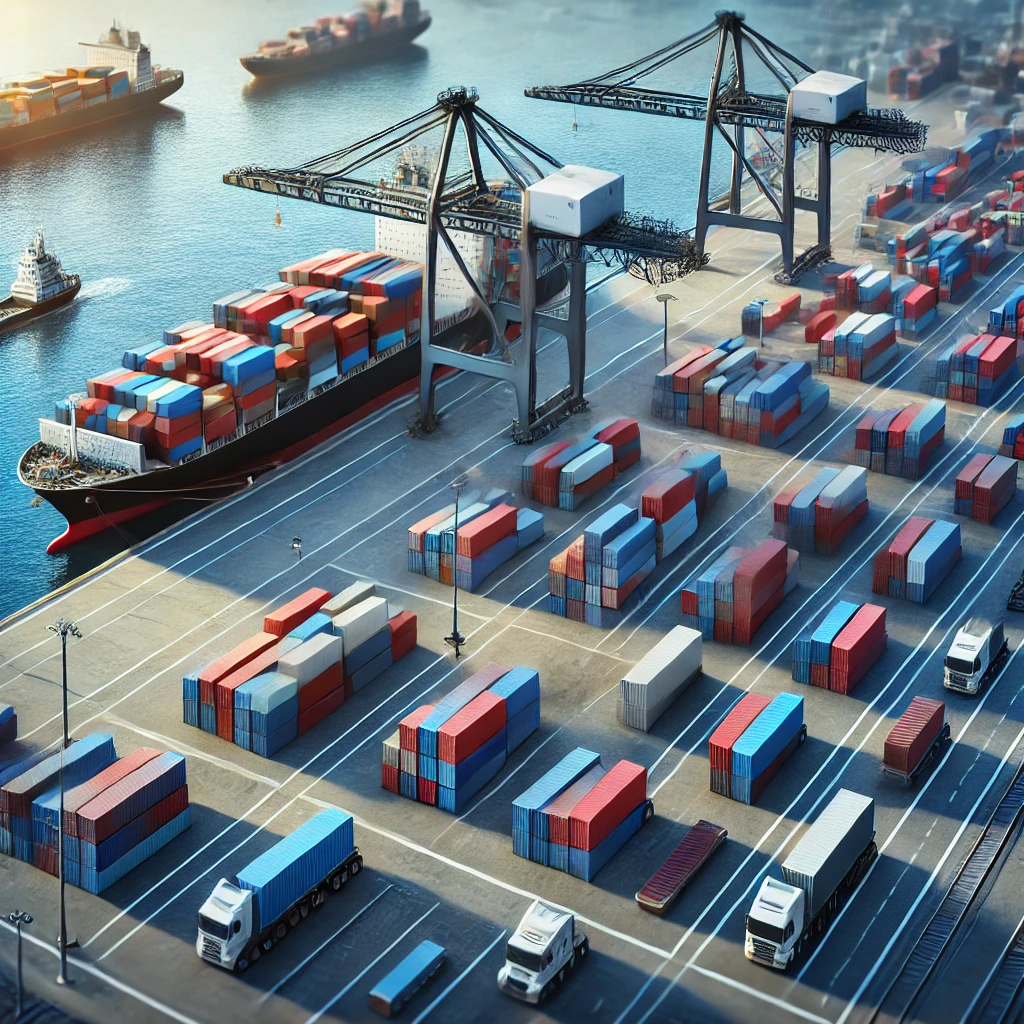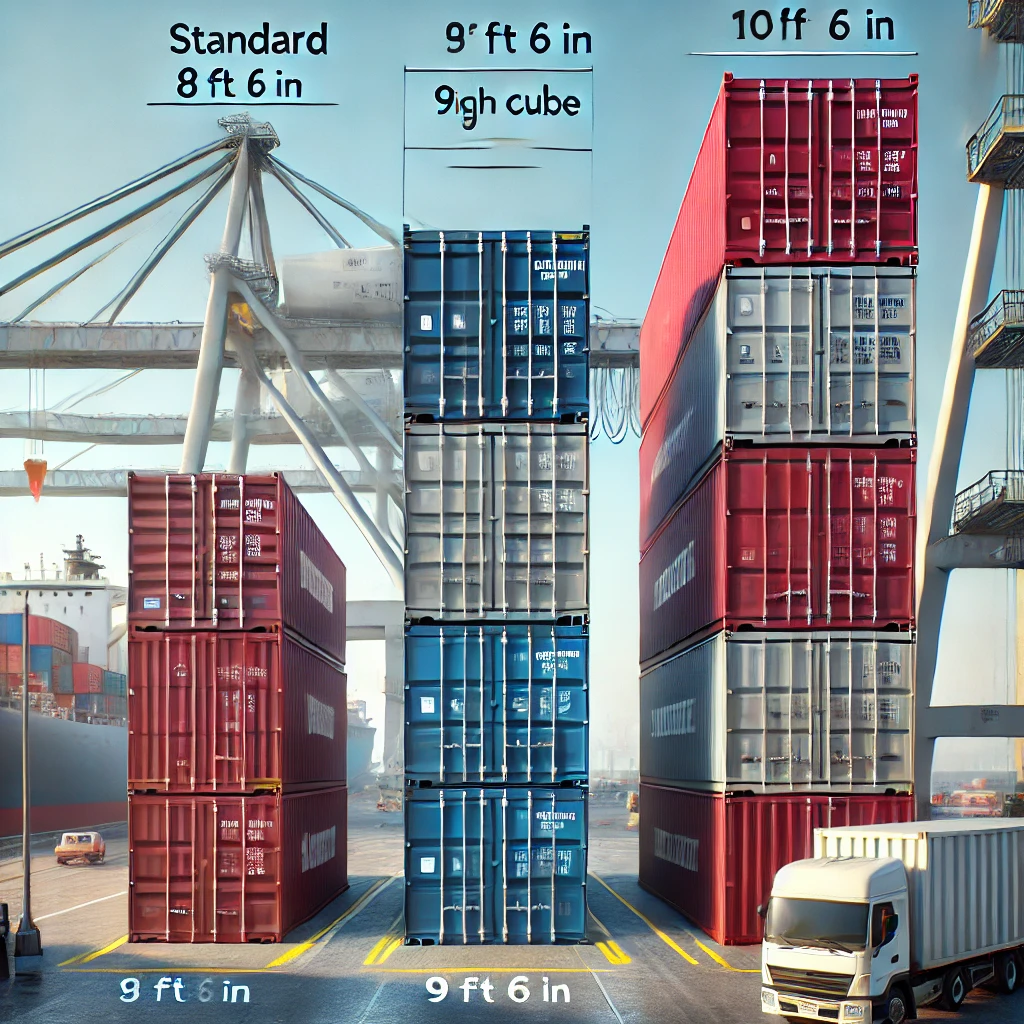What Is Shipping Container Height and Why Does It Matter?
But why does shipping container height matter? How does it impact loading capacity, storage, and transportation costs?
In this guide, we’ll break down everything you need to know about shipping container height, including standard heights, high cube containers, special variations, and practical applications for businesses. 🚢📦

Standard Shipping Container Heights
Shipping containers come in different dimensions, but the most commonly used standard heights are:
Container Type | Standard Height (External) | Standard Height (Internal) |
Standard Container | 8 ft 6 in (2.59 m) | 7 ft 10 in (2.38 m) |
High Cube (HC) Container | 9 ft 6 in (2.90 m) | 8 ft 10 in (2.69 m) |
Super High Cube (Rare) | 10 ft 6 in (3.20 m) | 9 ft 10 in (3.00 m) |
💡 Example: If a business is shipping stackable pallets that are 8 feet high, they might need a high cube container instead of a standard one to avoid wasted space and ensure safe loading.
Types of Shipping Containers Based on Height
1. Standard Containers (8 ft 6 in)
✔ The most commonly used container height for general cargo and dry goods.
✔ Ideal for palletized shipments, manufactured goods, and retail products.
✔ Available in 20 ft and 40 ft lengths.
2. High Cube Containers (9 ft 6 in)
✔ One foot taller than standard containers, providing extra vertical space.
✔ Used for oversized cargo, high-stacked pallets, and lightweight bulky items.
✔ Available in 40 ft and 45 ft lengths.
💡 Best for: Furniture, electronics, or any cargo requiring additional vertical space.
3. Super High Cube Containers (10 ft 6 in) – Rare
✔ Extra-tall shipping containers used for customized or special cargo.
✔ Not widely available, but useful for modular housing, industrial equipment, or construction projects.
💡 Best for: Situations requiring maximum height capacity, such as temporary storage units or portable buildings.

Why Does Shipping Container Height Matter?
✅ 1. Maximizing Cargo Space & Efficiency
✔ Taller containers allow higher stacking, reducing wasted space.
✔ High cube containers are better for lightweight but bulky cargo.
✅ 2. Transportation & Clearance Restrictions
✔ Rail and road transport have height restrictions, making some containers unsuitable.
✔ Standard containers fit under most bridges and tunnels, while high cube containers may require alternative routes.
💡 Example: A trucking company must check whether a 9 ft 6 in high cube container can clear highway overpasses before planning their delivery routes.
✅ 3. Cost Considerations
✔ High cube containers offer more space, but they may be more expensive to transport.
✔ Some ports and terminals charge extra fees for handling taller containers.
💡 Example: A shipper using high cube containers may need to compare extra capacity vs. additional handling costs to ensure cost-effective shipping.
Shipping Container Height vs. Other Container Specifications
Feature | Standard Container | High Cube Container | Super High Cube |
External Height | 8 ft 6 in | 9 ft 6 in | 10 ft 6 in |
Internal Height | 7 ft 10 in | 8 ft 10 in | 9 ft 10 in |
Best Use | General cargo | Tall cargo, high-stacked pallets | Modular buildings, oversized goods |
Transport Considerations | Fits most road & rail routes | May require alternative routes | Special permits may be needed |
💡 Key Takeaways:
✔ Standard containers work best for most shipments, while high cube containers offer extra vertical capacity.
✔ Super high cube containers are rare and mostly used for special applications.

How to Choose the Right Container Height for Your Shipment
1. Analyze Your Cargo Dimensions
✔ Measure the height of your goods and pallets.
✔ Choose high cube containers if stacking space is required.
2. Check Transportation Restrictions
✔ Verify bridge clearances and highway height limits for trucking.
✔ Confirm rail freight compatibility for taller containers.
3. Consider Cost vs. Space Efficiency
✔ High cube containers offer extra volume, but may have higher fees.
✔ Compare multiple shipping options before making a final decision.
💡 Example: A company shipping machinery parts in standard containers might upgrade to high cube containers if stacking efficiency outweighs additional shipping costs.
When to Use Different Container Heights?
✅ Best Situations for Using Standard Containers:
✔ General retail goods, electronics, textiles, and manufactured products.
✔ Shipments where height is not a limiting factor.
✔ Transporting through standard trucking and rail networks.
✅ Best Situations for Using High Cube Containers:
✔ Stackable cargo or taller goods requiring extra space.
✔ Efficient warehouse stacking for lightweight but bulky products.
✔ When volume is more important than weight.
🚫 When It May Not Be the Best Choice:
❌ If transporting cargo through routes with strict height restrictions.
❌ If additional handling fees outweigh extra storage capacity.

The Future of Shipping Containers: Innovations in Design
As global trade expands, shipping containers are evolving to meet new demands:
🚀 Collapsible & Modular Containers – More flexible for storage and transport.
🚀 Smart Containers with IoT Sensors – Real-time tracking and monitoring.
🚀 Eco-Friendly Materials – Sustainable alternatives for green shipping solutions.
Businesses that adapt to these innovations will gain a competitive edge in logistics and international trade.
Conclusion
Shipping container height is a critical factor in cargo logistics, transportation efficiency, and cost management. Understanding the differences between standard, high cube, and super high cube containers helps businesses optimize shipping strategies.
✔ Best for: Companies looking to maximize space and reduce shipping inefficiencies.
✔ Challenges: Must account for transportation restrictions and cost considerations.
By selecting the right container height, businesses can enhance supply chain efficiency, reduce costs, and ensure smooth global trade operations. 🚢📦💼
